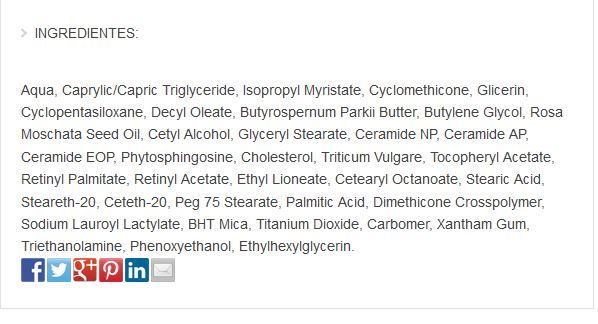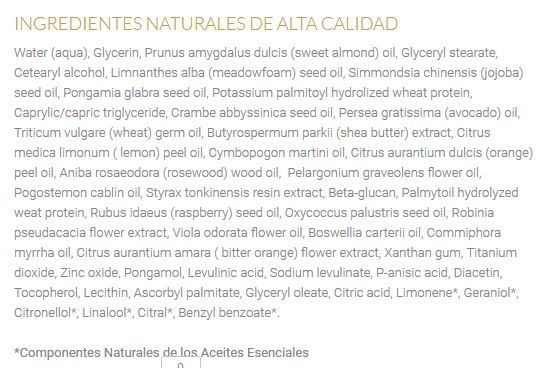Navigating through these worlds of gods and devils, I came across a cosmetic brand that described itself as “High Natural Cosmetics” and although it is a name that, within natural cosmetics, is certainly not new, however It has made me reflect on what it is or can mean for a brand to be high natural cosmetics.
The adjective “high” applied to cosmetics has always caught my attention. In the first place, because I think it is a presumptuous, not very humble and, I would say, even class-based adjective that, in any case, and from my point of view, consumers should assign. Secondly, because it seems unclear to me what this supposed height refers to: the price and the positioning in the luxury niche? To the use of a high percentage of active ingredients? To the use of a high percentage of organic ingredients? To the use of active principles and ingredients of the highest quality and cost, backed by R+D+i studies? Is it just marketing? Honestly, I’m not sure.
That is why curiosity has made me delve into deeper waters to try to find the answers to these questions through examples. I invite you to accompany me and draw your own conclusions. And, taking advantage of the promenade, we will see if each example honors or not the description of natural.
To try to find these answers, we are going to do a simple search for cosmetic brands that describe themselves as “high natural cosmetics”, randomly selecting a product from each of them for which there is complete and reliable information about the list of ingredients (ingredients ) and we will accompany this information with the sale price. With all this we will interpret each example and try to draw conclusions. Since this article is not intended to advertise, discredit or question other brands, but rather to inform the consumer and give them the tools so that they can distinguish -in this tidal wave of options that is the market- between what really It is natural and what is not and what could be implied by the nicknames of “high natural cosmetics”, we do not reveal the trademarks.
First port: Facial cream. Volume: 30 ml. Price: €18.95 (http://mamazebracosmetics.com)

We started off well. From irony, of course. I began this article by saying that I was not at all clear about what being high natural cosmetics implies or means, but what I am clear about -and a lot- is what is not natural, at least from what the main norms or standards understand by natural. of natural cosmetics worldwide. And it seems serious to me – very serious, and let’s say, unethical – that a brand presumes to be natural when reading the INCI (list of ingredients) of any product, not one, not two, but even more than 10 appear. ingredients whose use is not allowed by the main certifiers of natural cosmetics. The product may be wonderful, and be at a stratospheric height, but of course, it IS NOT NATURAL. And since I believe that the qualifier “natural” and “high” must be, if they coexist, in perfect harmony, In this case, the love story between the two ends here. From my humble point of view, this product is not high natural cosmetics, worth 20 or 20 thousand. If we also add that the first component is water – with which the percentage of active principles is considerably reduced -, that it does not have a single organic ingredient, that it has silicones (Cyclomethicone, Cyclopentaxilosane), synthetic rheological modifiers (Carbomer), derivatives of ethoxylated oil (Ceteth 20, Peg 75 Stearate) because you will understand that the concept of natural is quite damaging to the poor. So I don’t know where to look for height, honestly. If we also add that the first component is water – with which the percentage of active principles is considerably reduced -, that it does not have a single organic ingredient, that it has silicones (Cyclomethicone, Cyclopentaxilosane), synthetic rheological modifiers (Carbomer), derivatives of ethoxylated oil (Ceteth 20, Peg 75 Stearate) because you will understand that the concept of natural is quite damaging to the poor. So I don’t know where to look for height, honestly. If we also add that the first component is water – with which the percentage of active principles is considerably reduced -, that it does not have a single organic ingredient, that it has silicones (Cyclomethicone, Cyclopentaxilosane), synthetic rheological modifiers (Carbomer), derivatives of ethoxylated oil (Ceteth 20, Peg 75 Stearate) because you will understand that the concept of natural is quite damaging to the poor. So I don’t know where to look for height, honestly.
Second port. Regenerating face cream. Volume: 50 ml. Price: 235.47 (And no, I was not wrong) (alqvimia.com)

In this example, I have no objection regarding the natural qualifier, a clean INCI. As for the second qualifier, this second stop may give us clues about it. Due to the price of the product itself and the use of a wide range of essential oils whose prices are moderate, about 200 euros per kilo. However, they are neither organic nor do we find really high-altitude essential oils -except for violet, Viola odorata flower oil- such as damascene rose, jasmine, sandalwood, etc. whose prices far exceed several units of a thousand euros per kilo. In addition, the only component of the aqueous phase is water -the first component to make matters worse- with which, as we already said, the percentage of active ingredients is considerably reduced. And we did not find any ecological component either, which from my perspective, increases the quality of the product. On the other hand, reference is made to high-quality natural ingredients. And who guarantees that they have been collected and processed sustainably? How can we know if there is no type of certification? In short, my opinion: if the price is what determines that this cosmetic is high natural cosmetic, then it should be qualified as “exorbitant natural cosmetic”.
Third port. Facial cream. Volume: 50 ml. Price: 128 euros. (http://www.archangela.es)

The brand to which this product belongs calls itself “100% natural high cosmetics”. The adjective “100% natural” is something that, when I see it, instinctively makes me wary. Mainly because it is a very hackneyed name, almost always associated with marketing criteria, and it does not always live up to its meaning. If we were to trust that name at face value, we would have to trust that the Propylene glycol that appears in the list of ingredients is of natural origin (most often it is derived from petroleum) and since neither this brand nor the product, I see that they are certified, because we will leave it in an act of faith. On the other hand, Benzyl alcohol appears in the formula, which can be one of the ingredients of the preservative complex or a component of essential oils; and Dehydroacetic acid which is, yes or yes, a member of the preservative complex or the preservative component of any of the extracts used, and which is synthetic -although approved by the main certifiers of natural cosmetics-. So the “100% natural”, as we suspected, is no longer true to itself. In relation to the height, in this case the water is not the main component, but a floral water, and we found a multitude of active ingredients, but, on the other hand, we did not find any ingredient of certified organic origin or essential oils that we mentioned in the previous stop. Of course, the price exceeds 100 euros, perhaps this will give us a clue as to our search for answers. So the “100% natural”, as we suspected, is no longer true to itself. In relation to the height, in this case the water is not the main component, but a floral water, and we found a multitude of active ingredients, but, on the other hand, we did not find any ingredient of certified organic origin or essential oils that we mentioned in the previous stop. Of course, the price exceeds 100 euros, perhaps this will give us a clue as to our search for answers. So the “100% natural”, as we suspected, is no longer true to itself. In relation to the height, in this case the water is not the main component, but a floral water, and we found a multitude of active ingredients, but, on the other hand, we did not find any ingredient of certified organic origin or essential oils that we mentioned in the previous stop. Of course, the price exceeds 100 euros, perhaps this will give us a clue as to our search for answers.
Fourth and last port. Face moisturizer. Volume: 50 ml. Price: €59 (aliceinbeautyland)

At this stop it seemed that we were going to find harmony, the full “natural” couple but, ohhh: “Phenoxyethanol” appears on the scene, a preservative prohibited by the COSMOS label, BioVisaSana and by other standards. Anyway, again, broken marriage. The criteria for a cosmetic to be “High” are not yet clear, but this natural, natural cosmetic is not. As for the height: by percentage of active principles when replacing the water with vegetable waters, it could be; for price, it’s not high-rise, but it could fit; It has some organic ingredient (some are dubious as they are emulsifiers, since it is not the most common, much less to find them in organic grade) with respect to which it would be necessary to see the total percentage in the formula and if they are certified, about which I do not information is provided.
And finally, and in relation to the perfect harmony that should exist between the term “natural” and “high” when they appear together applied to cosmetics, other aspects should be taken into account, beyond the price and the list. of ingredients, such as the sustainability of the container and packaging, or the environmental responsibility of the company-brand itself. Because it is useless for a brand to sell itself as high-end natural cosmetics if its containers are mixtures of different types of plastics that are difficult -if not impossible- to recycle or the secondary packaging is made of plastic, or there is an excess or oversize of the packaging: packaging cardboard and cellophane wrap, etc.
Conclusions? My personal opinion is that the “height” as a brand name applied to natural cosmetics is more a question of marketing and positioning in a certain niche than of real quality criteria (high percentage of active ingredients, use of a high percentage of ingredients certified organic, endorsement of R+D+i or clinical, in vitro or scientific studies associated with the products or the claims).
